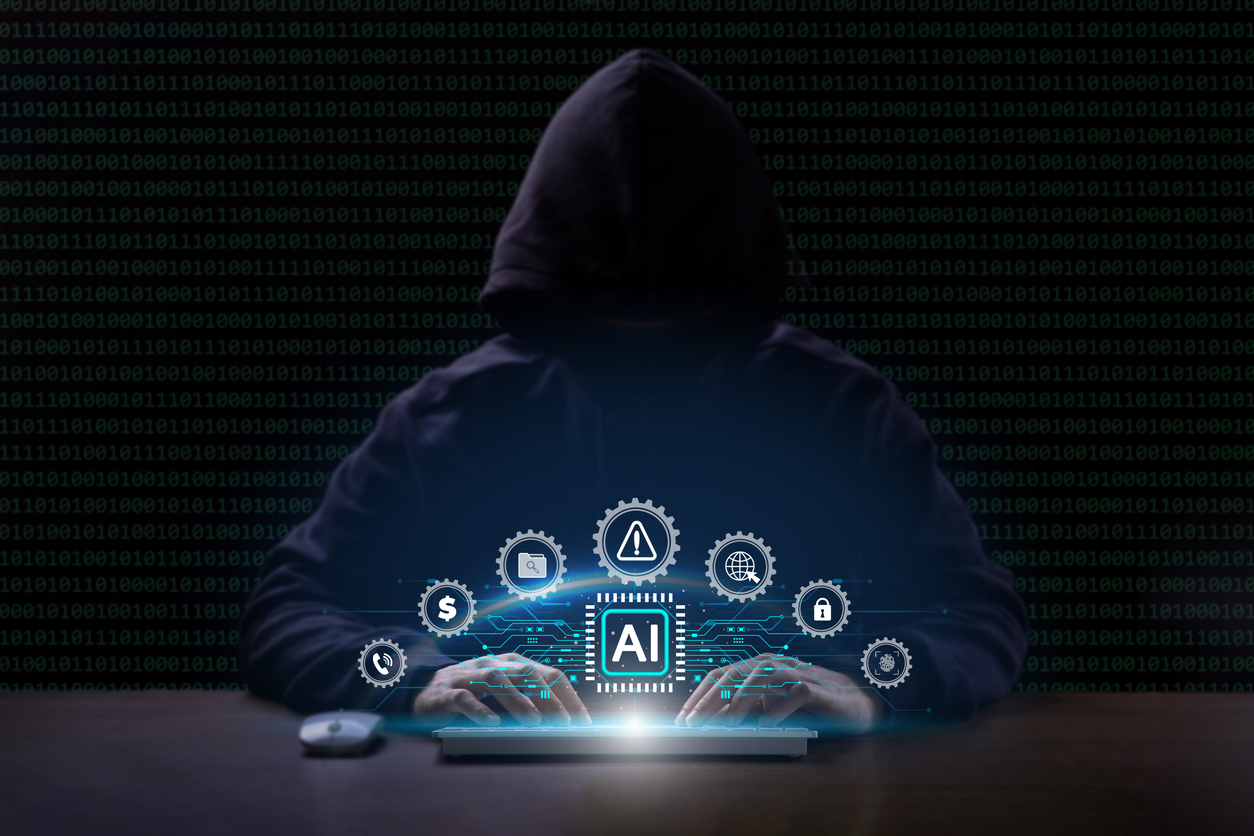Imagine this: Your phone buzzes with an urgent WhatsApp message from your company’s CFO. “I need you to approve a wire transfer immediately—we’re about to lose a critical deal,” the message reads. A follow-up voice note sounds exactly like your CFO’s voice, complete with their signature nervous laugh. You’re about to comply when something feels off. You call their office directly, only to discover they’ve been in back-to-back meetings all day and sent no such message. You’ve just encountered an AI-powered cyberattack, and you’re not alone.
AI-driven cyberattacks are on the rise. According to the SoSafe 2025 Cybercrime Trends report, 87% of surveyed security professionals have reported that their organization has encountered an AI-powered cyberattack within the past year, while 91% of experts anticipate a continued surge in these attacks over the next three years. However, detection of these attacks poses a significant challenge to all organizations; even among security professionals, only 26% reported having expressed high confidence in their ability to detect these threats.
Timeline: The Evolution of AI-Powered Threats
2018-2019: The Foundation
- Basic AI tools emerge for content generation
- Early chatbots begin mimicking human conversation
2020-2021: Criminal Adoption
- Cybercriminals start automating phishing campaigns
- First documented cases of AI-generated fake identities
2022-2023: Sophistication Surge
- Deepfake technology becomes accessible
- AI begins personalizing attacks at scale
- Voice cloning tools reach consumer markets
2024-Present: The Arms Race
- Real-time deepfake conversations become possible
- AI orchestrates multi-channel attack campaigns
- Criminal AI learns from each failed attempt
2025-Beyond: Predicted Evolution
- Fully autonomous attack systems
- AI vs. AI cybersecurity battles
- Personalized attacks targeting individual psychological profiles
Given the prevalence of AI in new and emerging cyberthreats, it is important to understand how AI is enabling cybercriminals in ways which are novel and difficult to mitigate.
AI-Powered Cyberattacks
As AI has long served as a productivity tool for ordinary, non-malicious uses, it goes to show that AI can be utilized in the same way to help cybercriminals scale up their operations. AI-powered cyberattacks can automate and accelerate different phases of cyberattacks, whether via blended multichannel attacks across email, SMS, and social media platforms, or through campaigns across identified attack vectors. The use of AI means that these attack patterns can learn and evolve over time, making them more adaptable and thus more difficult to predict or detect.
AI-Powered Social Engineering
A social engineering attack is one in which the nefarious party seeks to manipulate weak links, often individual users, to make mistakes based on human behavior such as sharing sensitive data, transferring money, or granting access to secure systems or networks. These attacks are often the most successful, and the use of AI is amplifying their efficacy. Through use of AI, ideal targets can be more easily identified, and development of personas, scenarios, and dialogue with which to engage the target can be more rigorously produced. This can lead to messages which are much more personalized than could otherwise be achieved, including highly specific multimedia assets such as audio or video.
AI-Powered Phishing
Phishing is a form of social engineering that focuses heavily on tricking a user into clicking on a deceptive email link or fake website. AI is often being utilized by cybercriminals to automate real-time communication with their marks, such as in the case of AI-powered chatbots simulating interaction with a real human. This can help criminals pose as customer support representatives and maximizes the efficiency with which they can target a large number of individuals.
AI-Powered Deepfakes
In social engineering and phishing attacks, cybercriminals often rely on AI-generated deepfakes, images, videos, or audio files which are intended to impersonate someone. By mimicking a person’s visage or voice utilizing existing recordings or footage, a cybercriminal can doctor content to pretend to be a client or executive, making their requests more credible to the victim. Research from Eftsure, a payment fraud prevention platform, found that deepfake fraud attempts have surged by 3000% in 2024.
AI-Powered Ransomware
Ransomware is a type of malware that encrypts a victim’s files, holding them hostage under threat of ransom. By leveraging the power of AI, criminals can more readily research targets, identify system vulnerabilities, and encrypt data. The speed of data encryption is a notable arms-race in the world of info security, as the quicker the criminal can encrypt your data, the less time you have to identify and contain the breach. AI is also being used to adapt and modify the ransomware over time, making them more difficult to detect.
How to Combat AI-Powered Threats
To effectively combat the speed and sophistication of AI-powered cyberattacks, organizations must deploy equally advanced, AI-driven defenses. At Magna5, we leverage cutting-edge artificial intelligence and machine learning technologies within our Pentaguard suite, empowering our security operations with the ability to detect, analyze, and respond to threats in real-time. Our commitment to continuous innovation ensures that we stay ahead of emerging attack vectors and deliver best-in-class cybersecurity solutions. By integrating AI into our layered defense strategy and 24/7/365 Security Operations Center, Magna5 provides proactive, adaptive protection tailored to the evolving threat landscape. To learn more about our cybersecurity solutions, contact us today.













